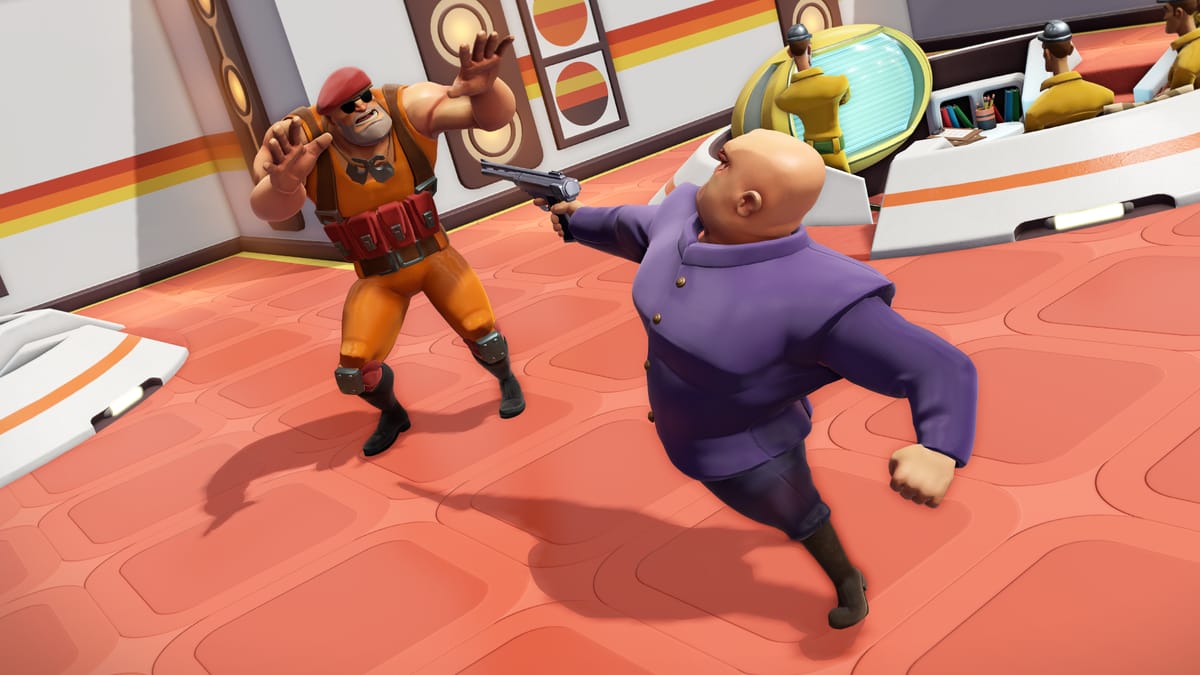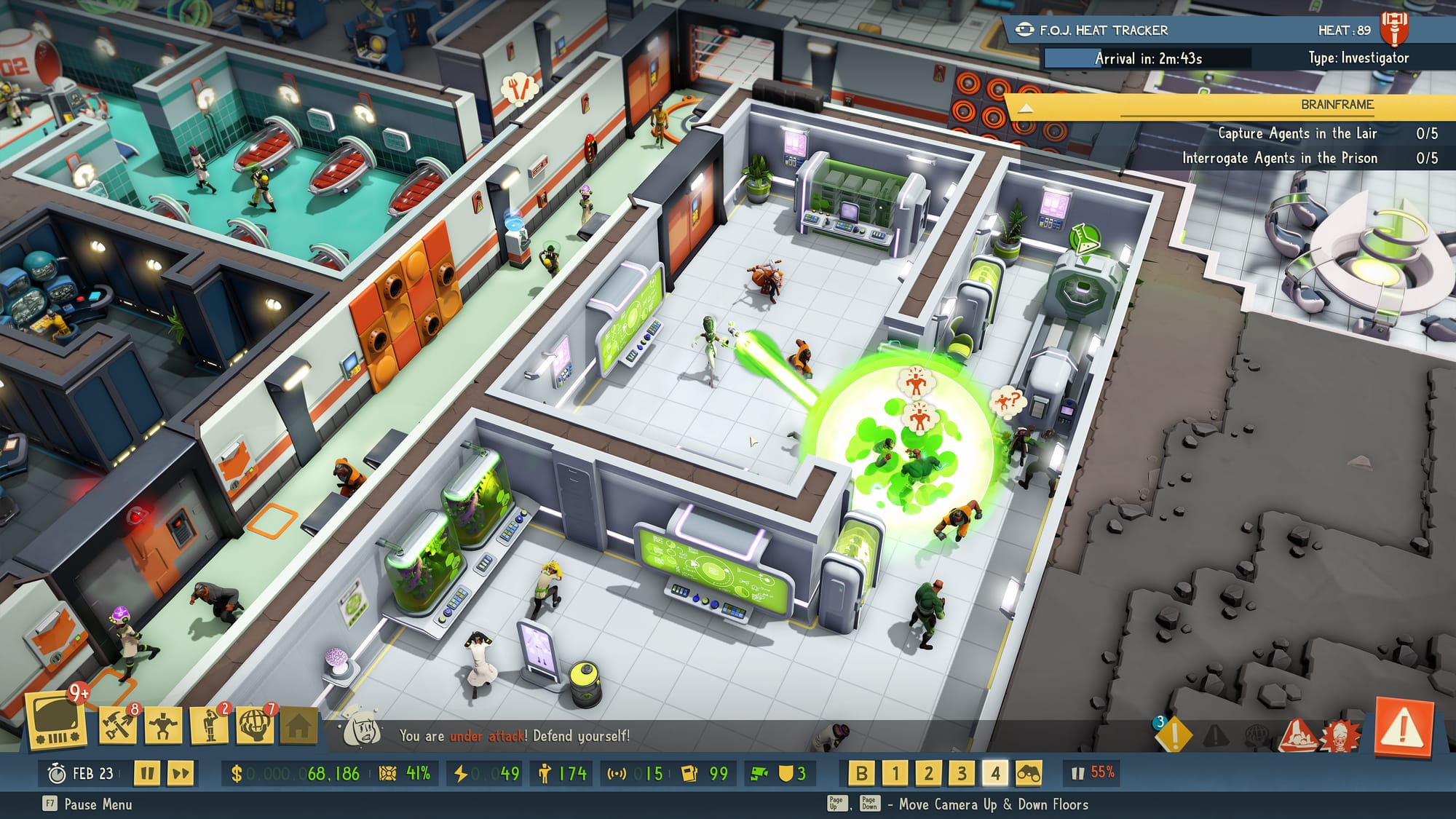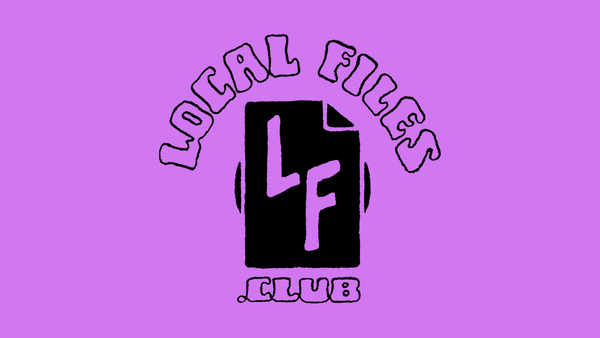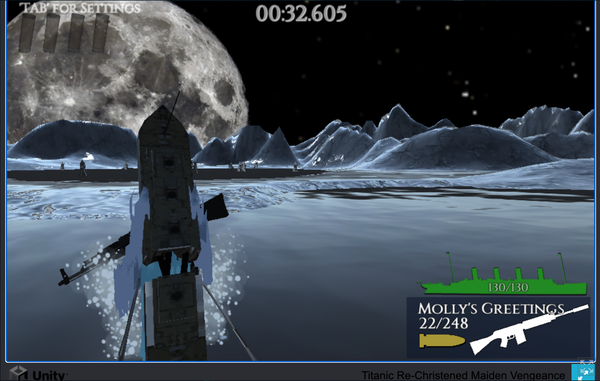Gaming! in the Cloud
Cloud Gaming Is The Most Fun a Boy Can Have Without Buying a PC

I’ve found it difficult to write this week because Evil Genius 2: World Domination, the long-awaited sequel to one of my favorite video games growing up, finally came out on March 30. Every time I get stuck writing, I think, Oh, I’ll just play a little bit of Evil Genius, and then three hours later I think, Oh, I should really get to bed.
Released in 2004, the original Evil Genius is a Dungeon Keeper-esque strategy and simulation game that puts you in the shoes of an evil genius hellbent on world domination. As the aforementioned evil genius, you’re in charge of building a lair, managing minions and henchmen, and completing missions across the globe to steal cash, loot, and raise your profile.
The studio that made Evil Genius went defunct the year after it was released, with their IP being bought up by Rebellion, who used it to make two crappy Evil Genius Facebook games before finally announcing a proper sequel in 2017. It comes during a proper revival for the management simulation genre, a real boon for me, who lived for SimCity and Theme Hospital and would buy literally any game with “Tycoon” stuck at the end. The only games I am truly good at could be best described as a virtual part-time job.
The bad news was that Evil Genius 2 is only available on Windows PCs, and I am a Mac user. I could wait and pray they port the game over to Macs or consoles, but where's the fun in being patient? Instead, I looked into renting a computer in a server farm somewhere that I could access through the internet.

This might sound unnecessarily complicated—and, yeah, it probably is—but it was actually quite easy to set up. I used a service called Paperspace, which is primarily designed for folks who need a lot of power for machine learning applications, to spin up a Windows desktop. This desktop is accessible through a web browser, but I've been using Parsec, a piece of software that specializes in low-latency connections for cloud gaming, to connect. From there, it's easy to log in to my Steam account and immediately have access to my entire library of digitally purchased games from the last decade.
The entire process took less than thirty minutes, and, compared to going out and buying a Windows PC, is relatively affordable: my Paperspace instance costs $7 per month plus $0.45 for each hour it's running, and Parsec is free. Given that a good-enough gaming PC would easily cost over $1000, and I don’t anticipate spending nearly enough hours to reach that cost, Paperspace feels like a good enough solution for me in this specific moment, where I’m willing to pay some amount because I'm impatient, but not willing to buy a whole computer.¹
Is playing Evil Genius 2 from the cloud any good? Honestly, it's hard to tell—issues that I thought were related to lag, specifically weird, floaty cursor issues, are also being reported by folks playing on PCs right in front of them. The video will sometimes degrade quite terribly, making it difficult to make out UI elements and the action on screen. For the first few hours, this was fine, but as the game got more complicated, it became frustrating. When there are multiple super agents fucking around in my lair, and I can't tell the difference between agents and my own minions because the video is so degraded, it taints my experience of the whole game.
But building a cloud gaming platform is hard—you not only have to stream high-quality video to the client, but you also have to transmit their input so fast that any lag is imperceptible. It’s incredibly high stakes, and companies like Microsoft, Google, and Amazon are spending millions trying to make it work for their various platforms. The fact that playing Evil Genius 2 is decent enough that I haven't canceled my Paperspace account is a testament to the promise of this technology for casual gamers like myself, who just want to spend their free time building lairs, hospitals, and theme parks in a risk-free environment.
Originally, I was going to use a competing cloud gaming platform called Shadow. Unlike Paperspace, Shadow charges a flat monthly fee of $11.99, but they also have waitlist to get in. I got in line for a spot in February, with an estimate that I’d have my virtual machine by the end of April. Since then, Shadow has gone bankrupt, with half of the potential buyers aiming to sell it for parts. ↩




